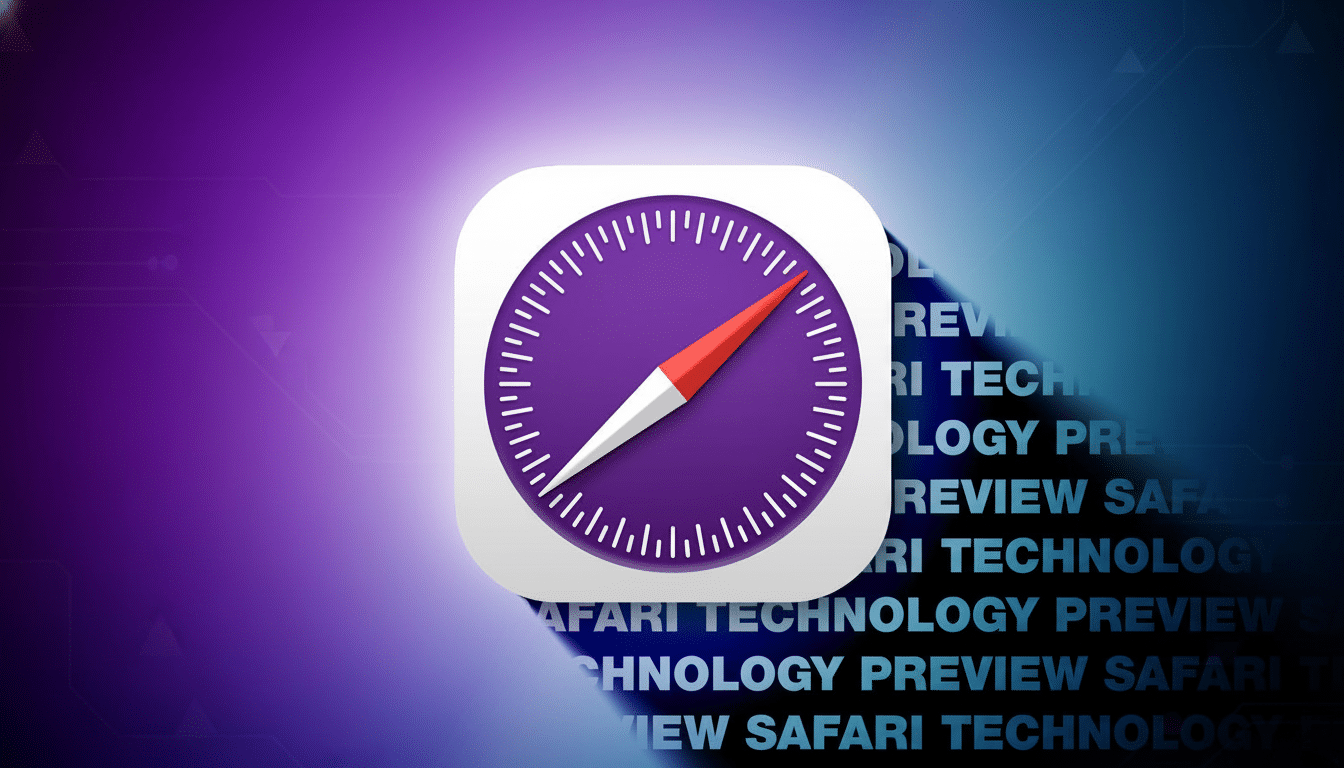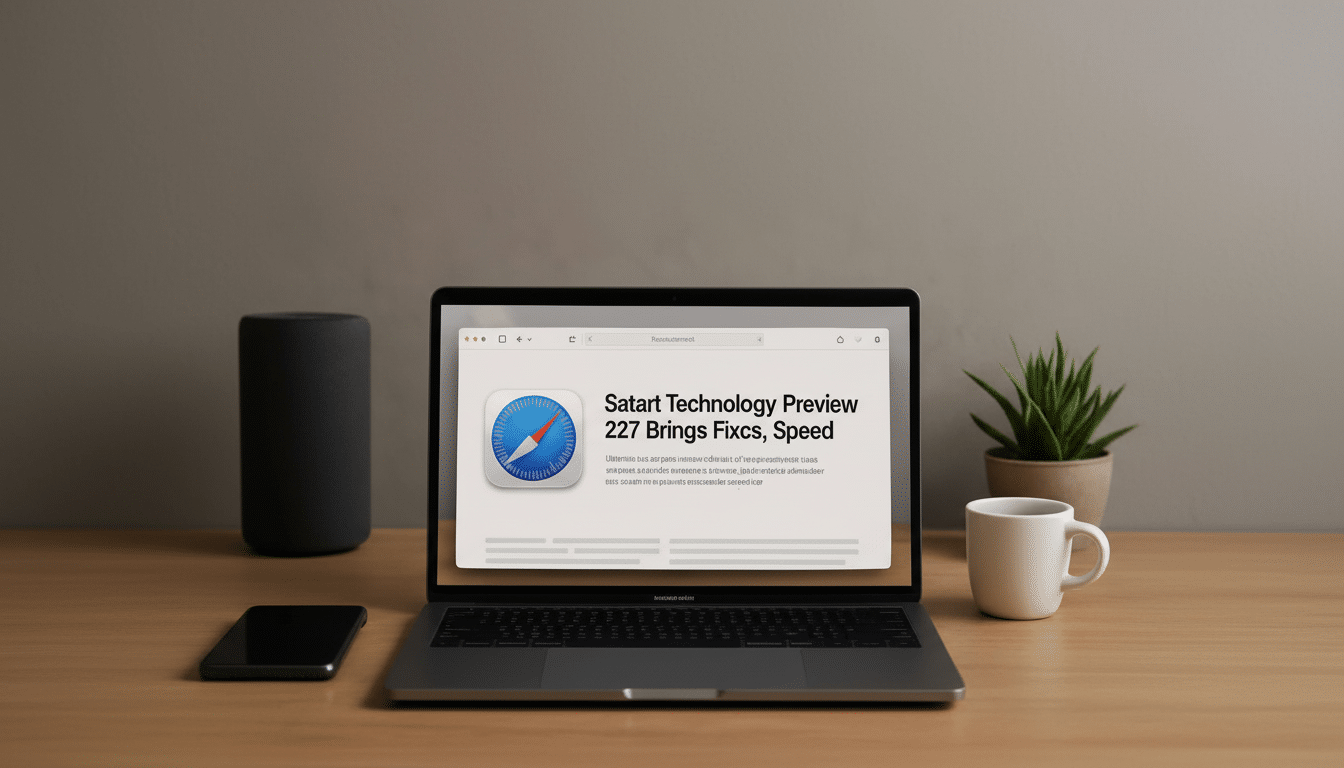Apple on Wednesday released Safari Technology Preview 227, the latest version of its experimental browser, first launched in 2016, designed to test features that may make their way into the release version of Safari. The update is centered on general stability improvements and specific performance efforts to provide developers a glimpse into improvements moving down the WebKit stack.
New in Build 227
Included among the list of changes in today’s updates, based on Apple’s release notes and changes from updating the WebKit component, are Accessibility, Animations, CSS, Editing, Forms, HTML, Images, JavaScript, Networking, Rendering, SVG, Storage, Tables, Web API, Web Inspector, and WebAssembly fixes. That scope indicates a housekeeping release designed to smooth over edge cases rather than to show off marquee features.

Developers are likely to pay attention to parts of complex apps where regressions appear often: form validation and autofill flows, rendering tables under heavy DOM mutation, SVG filters and gradients, and behaviors deep in JavaScriptCore that frameworks like React, Vue, and Svelte depend on. Changes to Web Inspector also suggest changes to debugging workflows making it easier to surface more accurate network timings and clearer CSS overlays during layout inspection.
Performance and reliability focus
Apple doesn’t publish detailed performance deltas for individual Technology Previews, but increases to JavaScriptCore and performance-based rendering generally manifest as increased responsiveness metrics that are important to users—cancellation of input latency, faster time-to-interactive, and more robust scrolling during minimum-layout-size loads. In previous cycles, WebKit developers have focused on optimizations to the bytecode, garbage collection tuning and the scheduling for style and layout work, changes that add up to incremental wins for popular benchmarks like Speedometer and JetStream, maintained by browser engine teams.
WebAssembly updates have an impact on web apps that depend on native-like performance. Design tools and CAD viewers and video editors that compile to WebAssembly — even with workloads reminiscent of what we see in Figma, AutoCAD Web-experiences, or ffmpeg-based processing — can gain a lot from modest improvements to runtime performance and memory-management.
Compatibility and availability
Safari Technology Preview 227 supports macOS Sequoia and macOS Tahoe. Like past releases, it will install alongside the stable Safari, have a separate app icon and profile, and be deletable without impact to the primary browser. Anyone who already downloaded the preview build directly from Apple’s site can get the update from the Software Update panel in their System Settings.
The preview is available to everybody; you don’t need an developer account, so you can easily fit it into your workflow to test changes with the latest WebKit without needing to have the whole of SafariTechnologyPreview, just the browser. Such broad access is by design: Apple uses feedback from developers, QA engineers and power users to prioritize bugfixes and refine standards implementations.

Why this release is important for the web stack
There is a large set of categories touched in 227’s maps that dovetail closely with areas being more fully discussed at the standards bodies (W3C, WHATWG): forthcoming CSS features, HTML parsing behaviors that interoperate across browsers, modern web forms controls, web API semantics. Even in a “fixes and polish” cycle, consistency pays off to encourage cross-browser compatibility—since it reduces the amount of framework-only shims, and conditional code paths that cost maintenance.
Accessibility fixes are especially meaningful. Enhancements to keyboard navigation, ARIA mappings, and focus management can have a direct impact on the conformance score many organizations have for WCAG guidance and internal quality audits. This is the sort of incremental shift for a team in a regulated space which is worth pulling forward for in light of early verification.
What can developers and testers do practically?
Set up the new build and exercise crucial critical paths that depend on updated pieces: elaborate forms with custom validation, tables with virtualized rows, heavy SVG-dashboards, or pages with advanced CSS features. Use the performance panel in Web Inspector to compare interaction timing and memory usage against your baseline in stable Safari and in other browsers.
Finally, if you see a gap in behaviour, fill radars using Feedback Assistant and mirror technical details in the WebKit bug tracker used by the engine team. Clear repro steps (simplified test cases), and Print Screens from the Web Inspector really help speed triage. Security related issues will be addressed per Apple’s advisory process, and|/or through the regular bug reporting process and will receive CVE IDs when resolved.
The bottom line
Safari Technology Preview 227 is a stable release, developer-focused release that includes bug fixes, stability improvements, and continued incremental performance work on the WebKit features that it covers. If your web app relies heavily on dense UI, complex SVG, or WebAssembly, this is a good build to test with to get your app ready for when these changes ship in the next stable Safari release.

